Tenths And Hundredths - 1 Class 5 Worksheet Maths
Answer the following Questions.
Q1: How many millimeters in 4 centimeters?
Ans: To convert centimeters to millimeters, it's important to know the conversion factor:
1 centimeter is equal to 10 millimeters.
Therefore, to find how many millimeters are in 4 centimeters, you can use the following calculation: 4 centimeters × 10 millimeters/centimeter = 40 millimeters.
Thus, there are 40 mm in 4 cm.
Q2: What is the best unit for measuring the length of this phone?
 Ans: The best unit for measuring the length of this phone is centimeters.
Ans: The best unit for measuring the length of this phone is centimeters.
Q3: The graph shows the color of each student's eyes where 10 students are in a group. Which color shows the fraction 2/10?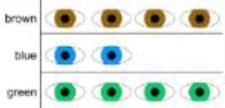 Ans: Blue
Ans: Blue
Q4: How can we write 7.6 cm in this form:______cm and _______ mm?
Ans: To express 7.6 cm in the form of ______ cm and ______ mm, we can break it down as follows:
- 7 cm represents the whole centimeters.
- 6 mm represents the remaining millimeters.
Thus, the answer is 7 cm and 6 mm.
Q5: Who has the longest tail?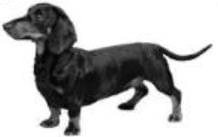
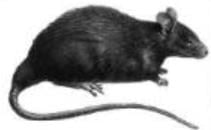
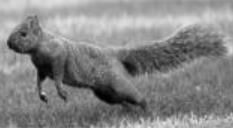
Ans: The animal with the longest tail is the rat. Rats are known for their long, flexible tails, which can be used for balance and communication.
Q6: If soap cost ₹12.50 then how much will 4 soaps cost?
 Ans: If one soap costs ₹12.50, then the cost of 4 soaps can be calculated as follows:
Ans: If one soap costs ₹12.50, then the cost of 4 soaps can be calculated as follows:
- Cost of 1 soap: ₹12.50
- Cost of 4 soaps: 4 x ₹12.50 = ₹50
Therefore, 4 soaps will cost ₹50.
Q7: There are 100 students in a school. 42 are girls and the remaining are boys? What fraction of them are boys?
Ans: In a school with 100 students, there are 42 girls. This means the remaining students are boys.
To find the number of boys, subtract the number of girls from the total number of students:
Total students: 100
Girls: 42
Boys: 100 - 42 = 58
Thus, the fraction of students who are boys is: 58/100
Q8: A box consists of 10 balls. 4 are blue and the rest are yellow. What fraction of the balls is yellow?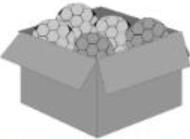 Ans: A box contains a total of 10 balls, out of which 4 are blue. This means that the remaining balls are yellow. To find the number of yellow balls:
Ans: A box contains a total of 10 balls, out of which 4 are blue. This means that the remaining balls are yellow. To find the number of yellow balls:
Subtract the number of blue balls from the total: 10 - 4 = 6.
Thus, there are 6 yellow balls in the box. To determine the fraction of the balls that are yellow, we can express this as:
Fraction of yellow balls = Number of yellow balls / Total number of balls = 6/10.
Q9: How can we write 340 mm in cm?
Ans: To convert millimetres to centimetres, you simply divide the number of millimetres by 10, since there are 10 mm in a centimetre.
Therefore, 340 mm can be calculated as follows: 340 mm ÷ 10 = 34 cm
Thus, 340 mm is equal to 34 cm.
Q10: Lara had 4 squares of side 6 cm, 3 cm, 7 cm, 5 cm. She want to put ribbon around each. How much will it cost to buy ribbon if 1 cm cost ₹10?
Ans: The formula for the perimeter (P) of a square is given by: P = 4 × side length
- For the square with a side of 6 cm: P = 4 × 6 = 24 cm
- For the square with a side of 3 cm: P = 4 × 3 = 12 cm
- For the square with a side of 7 cm: P = 4 × 7 = 28 cm
- For the square with a side of 5 cm: P = 4 × 5 = 20 cm
Now, add the perimeters of all the squares:
Total perimeter = 24 + 12 + 28 + 20 = 84 cm
Since the cost of 1 cm of ribbon is ₹10, the total cost will be:
Total cost = 84 cm × ₹10 = ₹840
So, Lara will need ₹840 to buy the ribbon.

Q11: Avan bought 2.5 m of timber at $ 10.50 m. How much did he spend on timber?
Ans: Avan bought 2.5 metres of timber at $10.50 per metre.
To calculate the total cost, we multiply the quantity by the price per metre:
Total Cost = Quantity × Price per Metre
Total Cost = 2.5 × $10.50 = $26.25
Thus, Avan spent a total of $26.25 on timber.
Q12: Walter walked from one tree to another in 3 stages. The distance covered was 6.5m, 250cm, 6.2m. How much distance in total did Walter walk?
Ans: To calculate the total distance Walter walked, we need to convert all measurements to the same unit.
The distances he covered are: 6.5 m, 250 cm (which is 2.5 m), 6.2 m
Now, we can add these distances together: 6.5 m + 2.5 m + 6.2 m = 15.2 m
Therefore, the total distance Walter walked is 15.2 m.
Q13: Which unit should be used to measure the length of bus? Ans: The appropriate unit to measure the length of a bus is meters.
Ans: The appropriate unit to measure the length of a bus is meters.
Q14: If the temperature of Rajasthan is 47.5°C and that of Mumbai is 28.7°C. What is the difference in temperature?
Ans: The temperature difference between Rajasthan and Mumbai can be calculated by subtracting the lower temperature from the higher one.
- Temperature in Rajasthan: 47.5°C
- Temperature in Mumbai: 28.7°C
- Difference: 47.5°C - 28.7°C = 18.8°C
Thus, the temperature difference is 18.8°C.

Q15: How many meters are there in 15 centimeters?
Ans: To convert centimeters to meters, you divide the number of centimeters by 100.
Thus, the calculation is as follows: 15 cm ÷ 100 = 0.15 m
Therefore, 15 centimetres is equal to 0.15 meters.
Q16: If a string is 2.8 cm long and is cut into two equal parts. How much will be the length of each part?
Ans: If a string is 2.8 cm long and is cut into two equal parts, the length of each part will be 1.4 cm.
Q17: The height of each block is 10.5cm. What is the height of 8 stacked blocks?
Ans: The height of each block is 10.5 cm. To find the height of 8 stacked blocks, you simply multiply the height of one block by the number of blocks:
- Height of one block: 10.5 cm
- Number of blocks: 8
Total height = 10.5 cm x 8 = 84 cm
Thus, the total height of the 8 stacked blocks is 84 cm.
Q18: If Rahul's height is 160cm. What will be his height in meters and how much more his height should be increased to make up to 2 m?
Ans: Rahul's height is 160 cm, which is equivalent to 1.6 m. To reach a height of 2 m, he needs to increase his height by 0.4 m.
Q19: There was a long jump competition in school. Ramesh jumped 2.50m and Suresh jumped 2.05m. Who was the winner?
 Ans: Ramesh was the winner of the long jump competition, having jumped 2.50 metres, while Suresh jumped 2.05 metres.
Ans: Ramesh was the winner of the long jump competition, having jumped 2.50 metres, while Suresh jumped 2.05 metres.
Therefore, Ramesh's jump of 2 metres and 50 centimetres surpassed Suresh's jump of 2 metres and 5 centimetres.
Q20: If the temperature of Chennai is 21.1° and that of Srinagar is 1.3°C. What is the difference in their temperatures?
Ans: The temperature difference between Chennai and Srinagar can be calculated as follows:
- Chennai: 21.1°C
- Srinagar: 1.3°C
To find the difference:
Difference = Temperature of Chennai - Temperature of Srinagar
Difference = 21.1°C - 1.3°C = 19.8°C
Thus, the difference in their temperatures is 19.8°C.
|
31 videos|286 docs|45 tests
|
FAQs on Tenths And Hundredths - 1 Class 5 Worksheet Maths
| 1. What are tenths and hundredths in terms of decimal numbers? |  |
| 2. How can I convert fractions to tenths and hundredths? |  |
| 3. Why are tenths and hundredths important in everyday life? |  |
| 4. How do I compare decimal numbers with tenths and hundredths? |  |
| 5. What are some common mistakes to avoid when working with tenths and hundredths? |  |

















